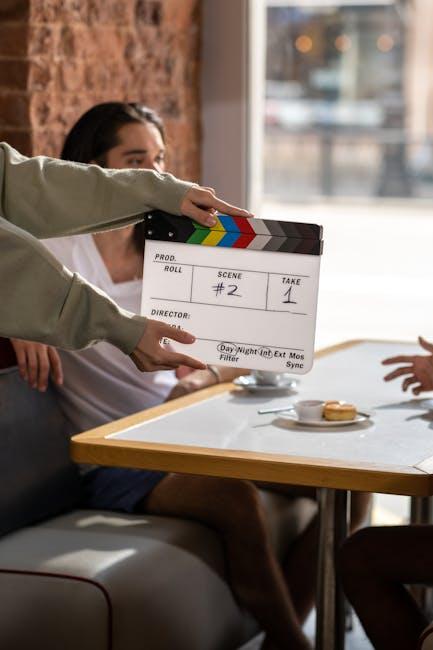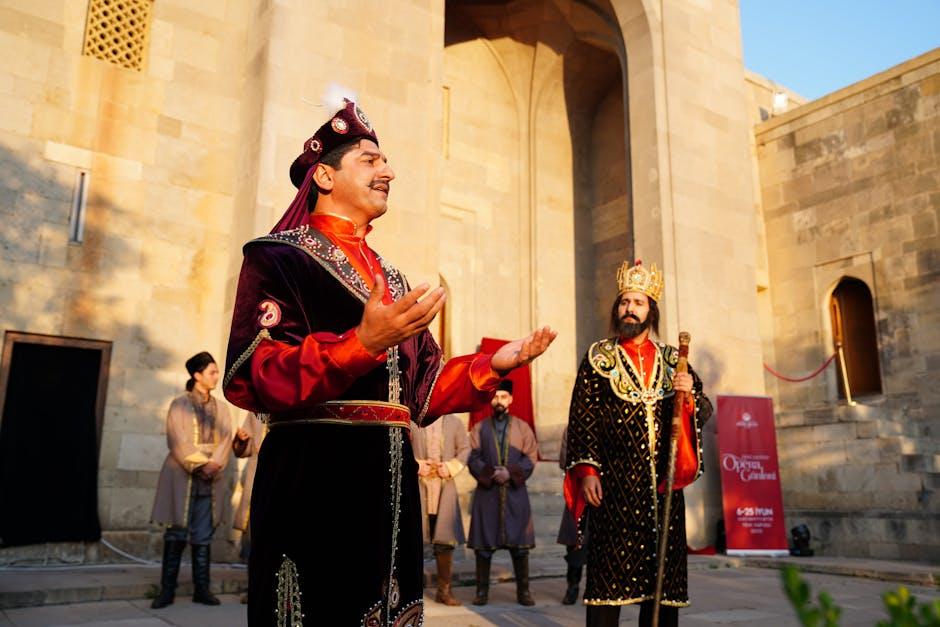Behind every unforgettable character lies an actor who breathed life into a story, capturing hearts and imaginations across time. These iconic roles become more than just performances; they transform into cultural touchstones, defining careers and shaping the collective memory of audiences worldwide. In this article, we delve into the reflections of actors as they revisit their most iconic roles—exploring the challenges, triumphs, and personal journeys that accompanied those defining moments on screen and stage. Join us as we uncover the stories behind the characters that continue to resonate long after the final curtain call.
Table of Contents
- Actors on the Personal Impact of Iconic Characters
- The Journey from Script to Screen Bringing Roles to Life
- Challenges Faced When Revisiting Beloved Performances
- How Iconic Roles Shape an Actor’s Career Trajectory
- Balancing Public Expectations with Personal Artistic Growth
- Advice for Aspiring Actors on Creating Memorable Characters
- Q&A
- Future Outlook

Actors on the Personal Impact of Iconic Characters
For many actors, stepping into an iconic role is both a career milestone and a profound personal journey. These characters often become intertwined with their own identity, influencing how they view themselves and are perceived by the public. A recurring theme among actors is the challenge of separating their true selves from the persona they portrayed on screen or stage, especially when the character’s impact resonates for years, even decades. The lines between reality and fiction blur as fans constantly associate them with these legendary roles.
Beyond fame, the experience often shapes their craft and future choices. Many performers speak about:
- Heightened self-awareness after inhabiting emotionally intense roles.
- Newfound empathy gained through understanding diverse character motivations.
- Creative reinvention to avoid being typecast.
| Actor | Iconic Character | Personal Impact |
|---|---|---|
| Emily Clarke | Seraphina the Warrior | Empowered advocate for women in action roles |
| Michael Owens | Detective Lane | Gained insight into human psychology |
| Sophia Ramirez | Camilla the Dreamer | Inspired a passion for storytelling |

The Journey from Script to Screen Bringing Roles to Life
Transforming a written character into a living, breathing presence on screen is an intricate dance of interpretation, emotion, and craft. Actors often describe their initial encounter with a script as the first step into a new world—one that demands both imagination and meticulous study. From dissecting subtext to identifying motivations, the process involves peeling back layers to unearth the humanity within the words. They rely on a mix of instinct and technique to embody traits that may differ vastly from their own personalities, often finding universal truths to bridge the gap between fiction and reality.
Throughout the journey, collaboration becomes a pivotal element. Directors, co-stars, and crew members contribute essential perspectives that shape a character’s final form. The following table illustrates some key factors actors consider when bringing roles to life:
| Aspect | Impact on Performance | Example Technique |
|---|---|---|
| Character Backstory | Creates depth beyond the script | Imaginative journaling |
| Physicality | Expresses internal emotions | Movement workshops |
| Vocal Tone | Builds identity and mood | Voice modulation exercises |
| Emotional Recall | Authenticity in dramatic scenes | Memory triggers |
- Immersion: Fully living the character’s world, often off-camera, to maintain consistency.
- Improvisation: Allowing spontaneous moments to enhance authenticity.
- Feedback: Utilizing notes from directors and peers to refine nuances.

Challenges Faced When Revisiting Beloved Performances
Stepping back into a character that once defined an actor’s career often invites a complex web of emotions and challenges. The passage of time reshapes both the actor’s perspective and the cultural context, making it difficult to completely recapture the original essence without feeling like a mere echo of the past. Many performers describe this experience as a tightrope walk between honoring their initial portrayal and infusing new depth, which requires balancing nostalgia with growth.
- Pressure from fan expectations: Audiences often hold iconic performances to a near-sacred standard, heightening anxiety around every gesture and line delivery.
- Internal conflict: Actors wrestle with whether to replicate past performances or reinterpret roles to reflect their current artistic maturity.
- Emotional vulnerability: Revisiting emotionally charged scenes can reopen old wounds or memories, demanding resilience and careful self-awareness.
Below is a snapshot of common hurdles actors have shared when re-immersing in beloved roles, highlighting how these challenges manifest on both practical and psychological levels.
| Challenge | Description | Impact |
|---|---|---|
| Typecasting | Risk of being perpetually associated with one character | Limits creative opportunities |
| Comparisons | Subject to past critical and fan comparisons | Increases performance anxiety |
| Physical evolution | Changes in appearance or energy levels | Requires adaptive performance techniques |

How Iconic Roles Shape an Actor’s Career Trajectory
Taking on a defining role often acts as a double-edged sword for actors. These characters can catapult them into the limelight and embed their faces in the collective memory of audiences worldwide. However, the career shifts that follow can vary dramatically. For some, these roles provide a launchpad, opening doors to diverse projects and allowing them to showcase versatility. For others, becoming synonymous with a particular character can create an invisible cage, making it challenging to escape typecasting.
Several factors influence how iconic roles impact actors:
- Industry perceptions and willingness to cast beyond type
- Actor’s proactive efforts in selecting varied roles post-iconic performance
- Audience acceptance of the actor in new and different avatars
- Timing within the actor’s overall career timeline
| Actor | Iconic Role | Career Outcome |
|---|---|---|
| Emma Watson | Hermione Granger | Expanded into diverse roles, including independent films |
| Daniel Radcliffe | Harry Potter | Chose eclectic roles to widen range, avoiding typecasting |
| Mark Hamill | Luke Skywalker | Famous as Skywalker but found a niche in voice acting |

Balancing Public Expectations with Personal Artistic Growth
Actors often find themselves walking a delicate tightrope between meeting audience expectations and exploring new creative territories. The pressure to reprise beloved characters or conform to fan imaginations can be intense, yet this same acclaim sometimes caps an actor’s trajectory. Embracing these iconic roles requires a form of personal surrender, but it also demands a continuous reinvention to keep the portrayal fresh and genuine. This balance cultivates resilience, allowing actors to honor the legacy of a role while expanding their own artistic horizons.
Many performers navigate this challenge by setting clear personal goals that coexist with fan anticipation. These might include:
- Experimenting with different acting methods between projects
- Choosing diverse roles to avoid creative stagnation
- Engaging in reflective practices such as journaling or workshops
- Collaborating with directors and writers to evolve character arcs thoughtfully
Below is a quick snapshot of famous actors and their approach to maintaining this artistic balance:
| Actor | Iconic Role | Strategy for Growth |
|---|---|---|
| Emma Thompson | Professor Sybill Trelawney | Explores theater to refine emotional range |
| Idris Elba | Stringer Bell | Chooses contrasting genres to challenge stereotypes |
| Viola Davis | Annalise Keating | Participates in writing and producing stories |

Advice for Aspiring Actors on Creating Memorable Characters
To breathe life into a character that lingers in the minds of audiences, authenticity is key. Dig deep into the character’s backstory, motivations, and contradictions—understanding their fears, desires, and quirks will elevate your portrayal beyond the script. Experiment with physicality and voice, exploring how subtle shifts in posture or tone can reveal layers previously unnoticed. Remember, it’s often the small, seemingly insignificant choices that make a role unforgettable.
Collaboration and observation also play vital roles. Engage with your fellow actors and director; feedback can illuminate fresh perspectives that sharpen your performance. Outside the rehearsal room, immerse yourself in real-world experiences that parallel your character’s journey. Consider these practical tips:
- Keep a detailed journal from your character’s point of view
- Study people with similar traits or backgrounds
- Use physical warm-ups to embody emotional states
- Incorporate meaningful props or gestures deliberately
| Technique | Effect | Example |
|---|---|---|
| Method Acting | Emotional truthfulness | Heath Ledger as Joker |
| Improv Sessions | Natural dialogue flow | Tina Fey in “30 Rock” |
| Character Journaling | In-depth personality insight | Denzel Washington as Malcolm X |
Q&A
Q: What inspired you to take on your most iconic role?
A: Every actor finds a personal connection that draws them to a character. For me, it was the complexity beneath the surface—this role challenged me to explore emotions I hadn’t tapped into before, making the journey both terrifying and exhilarating.
Q: How did embodying this character affect your perspective on your craft?
A: Bringing this character to life taught me the power of subtlety. Sometimes, what’s left unsaid speaks volumes. It deepened my respect for the nuances in storytelling, reminding me that acting isn’t just about spectacle but the quiet truths beneath.
Q: Were there any unexpected challenges during filming?
A: Absolutely. One of the biggest challenges was maintaining authenticity while facing intense physical and emotional demands. Balancing the technical aspects with a genuine portrayal required constant vigilance and adaptability.
Q: Looking back, is there anything you would change about your portrayal?
A: Hindsight always offers a clearer lens. While I stand by my performance, I sometimes wonder how even small shifts in tone or timing might have added new layers. But that’s the beauty of acting—the endless possibilities within a single role.
Q: How has this role influenced your career trajectory?
A: This role opened doors I hadn’t imagined, allowing me to explore a wider range of characters and genres. It also set a standard for myself, pushing me to seek out projects that challenge and inspire, rather than simply entertain.
Q: What do you hope audiences take away from your performance?
A: I hope they see the humanity in the character—the struggles, contradictions, and hopes that mirror our own. If my portrayal sparks empathy or reflection, then I feel I’ve honored the role’s true purpose.
Q: Can you share a memorable moment from your time working on this role?
A: There was a quiet scene where everything hinged on a single glance. During that moment, the crew fell silent, and I felt an incredible responsibility to carry the emotion. It was a reminder of how powerful stillness can be in storytelling.
Q: What advice would you give to actors approaching a potentially career-defining role?
A: Embrace vulnerability and do not shy away from discomfort. These roles often demand that you dig deep, sometimes into uncomfortable places. Trust your instincts, prepare thoroughly, but leave space for spontaneity—it’s often where magic happens.
Future Outlook
As the final curtain falls on these candid reflections, it becomes clear that iconic roles are more than mere characters—they are milestones etched into actors’ journeys. Each role, whether beloved or challenging, shapes their craft and carves a unique space in the tapestry of storytelling. In revisiting these performances, we glimpse not only the glamour of the spotlight but also the enduring human experience behind the scenes. Ultimately, these reflections remind us that while roles may fade into the past, their impact resonates long after the credits roll.
